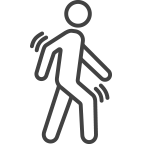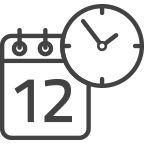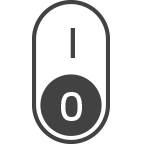Automatic lighting management: integration and home automation
You can have automatic lighting management thanks to motion and light sensors, time schedules and supervision software solutions. The automation of the lighting system not only allows for energy savings, but ensures the correct implementation of the light levels, also called scenes or presets, during the various activities carried out in the illuminated area, such as in a conference room, in a restaurant or in a cinema.
For emergency lighting, systems are used to automatically perform functional tests on the devices and endurance tests on integrated or centralized batteries (CPSS). These automatic lighting systems centralize the test results and therefore provide detailed diagnostics of the emergency system, as required by the EN50172 standard.
The technologies that enable automatic lighting management are as follows:

Motion sensors
They let you know if the illuminated area is occupied in order to lower or turn off the fixtures if it is empty. The most advanced systems use this information to map on “thermal” diagrams (Heat Maps) the degree of occupation of the various areas of a building.

Ambient light sensors
They allow the adjustment of the luminaire level in order to keep the luminous flux constant on the reference surface as the sunlight changes. This reduces consumption and guarantees a high level of comfort for users. This type of sensor is used in indoor environments, where it is possible to make a closed loop regulation.

Twilight brightness sensors
They allow the switching on and off of the appliances by detecting whether the level of sunlight is above or below a minimum threshold (twilight, eg 10 Lux). This type of sensor is used in outdoor environments, where only an open-loop adjustment can be made.

Schedules
They allow the activation of automatic working modes by sensors, possibly using different operating parameters during the day (type of active sensor, reference light level, switch-off timeout). Alternatively, they simply activate a preset lighting scenario (preset).
For emergency lighting, automatic device and battery test activities are created, performed weekly, monthly or half-yearly.

Manual physical and software controls
They allow manual setting by the user of a constant light level or the activation of automatic working modes by sensors or simply the recall of a preset light scene (preset).
Software integration
It allows the management of automatic lighting of the system by third-party software applications. For example the activation of the alarm system could set the switching on of the luminaires at maximum power or a management system could predispose the switching on of the system only in the days of actual presence of the workers.
